I said it again this weekend. While tasting a lineup of Italian wines with close friends, I was asked why a certain wine was so different than the others, despite being called the same thing. The explanation was a complicated mix of factors (i.e. vineyard elevation, the use of local grapes in 20% of the wine, and 18 months in large oak casks instead of barriques), and when my friends looked simultaneously intrigued but utterly lost on how I knew this and how they could apply such arcane knowledge into their own wine procurement habits, I meekly added “wine labels never tell you this stuff, but I wish they would.”
And there it was: the tired refrain of a wine obsessive who just wants to enjoy the party and not be seen as a bore.
“Wine labels never tell you this stuff, but I wish they would.”
You,
At a Party, Doing the Wine Industry’s Job For Them
Plenty has been written lately about wine’s perception problem. How it is not connecting with Millennials as they reach their peak earning years. How it is flat-footed with the latest consumer technology. How it is getting more alcoholic thanks to climate change while simultaneously there has been a cultural backlash against alcohol. All of this is true and worthy of attention. But when it comes down to it, the wine industry has a simple problem it refuses to tackle: it is terrible at telling its story. That problem begins and ends with the label.
While I get a genuine thrill out of introducing consumers to new wines that fire up their passion, I cannot shake the feeling that I am often doing the wine industry’s job for them. This is especially the case with my specialty, European wines, which hardly have any relevant or compelling info on the front or back label.
So Here is My Harebrained Idea for This Article …
What would it look like if we had 24 hours to take over the Alcohol and Tobacco Tax Bureau and change label requirements to answer all of our questions? Also known as the TTB for short (no really, not ATTB, just TTB), this regulatory agency sets the rules for what has to be on wine labels of wines sold in the United States. And it’s not much. If we were given the sole mission of imposing mandatory wine label reforms to genuinely help consumers, what all would that entail? And could we have fun with it? After all, people are always saying “wine is about pleasure,” and “eat, drink and be merry,” and all that other stuff. But you wouldn’t know it reading most of the material that’s out there pushing the product.
For this ridiculous exercise, let’s not worry about the limitations of packaging. It’s the digital age: whatever we physically can’t fit on the wine label would have to be accessible via QR code as well. (I can already hear you groaning).
The industry has made it clear for decades that if it ain’t required, they ain’t divulging it, even if it helps tell the story of their product in a way that would certainly sell it. And the TTB has shown that all they care about is tracking and collecting that tax.
So, it sounds to me like we’re the perfect band of pirates for this rather absurd assignment! Let’s dig in.
The Essentials
The main things we are owed — yes, owed — somewhere on the physical wine label.
1. The Goddamn Grapes
This is directed mostly at European wines from appellations of origin, especially those in France and Italy, two worlds I’ve spent a decade intensively studying, but which still have me reaching for my phone to Google “what grapes are in Bellet AOC?”
So you have appellation rules that restrict your grapes. Good for you. Now tell us what they are.
Some will say that this is “variety bias” and that the appellation of origin is the flavor of the wine. I’d posit that less than 5% of appellations reveal anything about terroir. Moot point.
Varieties matters. They have their own signature flavor profile that you either love or hate. Few things give consumers a more immediate, clear-headed impression of what’s to come than the grapes used.
2. (Honest) Blending Percentages
Along those lines, if it is a blended wine, tell us the percentages. This isn’t the Colonel’s Secret Recipe. We’re not going to make it at home and stop buying your wine. And while we might not know why 15% Cinsault matters versus 20%, tell us anyway. We’re here to learn.
And none of this 10% “other varieties” business either, especially if you are a wine from an appellation of origin. You are clearly obfuscating something (e.g. the Merlot and Syrah vines your dad planted in the 2000s that are no longer popular).
3. Actual Alcohol
The only required tidbit of information on the label that is actually helpful is often erroneously reported, or rounded up (or down) to the nearest 0.5%. But the number of times I’ve had a 14.5% wine that hit me like a 15.5% wine tells me there needs to be more accountability on this number.
4. Expiration Date
File under: yeah right. But here goes … BEST IF USED BY: DEC 2023. Place on the label of 80% of the world’s wines.
5. Government Warning on Alcohol Consumption
Time for an update. The current warning only presents one side of the story. Revisions below.
(1) ACCORDING TO THE SURGEON GENERAL, WOMEN SHOULD NOT DRINK ALCOHOLIC BEVERAGES DURING PREGNANCY BECAUSE OF THE RISK OF BIRTH DEFECTS. (2) CONSUMPTION OF ALCOHOLIC BEVERAGES IMPAIRS YOUR ABILITY TO DRIVE A CAR OR OPERATE MACHINERY. PLEASE DOWNLOAD A RIDE-SHARE APP OR CALL A TAXI. IT’S NOT HARD. (3) POSTING PICTURES OF 20 OPEN WINE BOTTLES TO INSTAGRAM IS NOT COOL, IT IS CONCERNING. (4) MAY CAUSE HEALTH PROBLEMS … HOWEVER, WINE IS RICH IN ANTIOXIDANTS AND ACCORDING TO BRAD PITT MAY HELP YOU RETAIN SMOOTHER SKIN.
6. Sulfites
Saying it contains sulfites is no longer enough in the information age. We need to know how these 750mL compare to other sulfite-rich foods:
CONTAINS THE EQUIVALENT AMOUNT OF SULFITES AS FIVE DRIED APRICOTS. THAT’S IT.
The Flavor of the Wine
Should wine labels (and the companion “digital wine labels” we are proposing) tell you what this whole experience will taste like?
I think so. However, perhaps tasting notes ought to be banned for the unhelpful mess they’ve become. There is another way.
7., 8., 9. Estimations on Acidity, Tannin and Body
For all three of these, we don’t need to be technical. Just an estimate. As Wine Folly has so easily proved over the years, all you need is a simple slider with an arrow to give us a snapshot. Of course, watching a room of bureaucrats and regulators fight over where those arrows belong would be the stuff of sketch comedy, but wouldn’t it be nice to know, especially on tannin?
10. Residual Sugar
This will never happen, especially in the United States where so many consumers demand dry but unwittingly drink sweet (dry being associated with tannic, when in fact it is the absence of sugar … an article for another day). We shouldn’t have to know proportionality vis-a-vis grams-per-liter. A slider would do on this one as well.
11. Fermentation Vessel
Stainless steel, oak, chestnut, acacia, concrete, clay, glass … They all influence the outcome of the wine massively. Which leads us to …
12. Oak Usage
While we are in Cloud Cuckoo Land with these demands, we may as well require specifics on whether the wine will have the tannins of tree bark and the flavors of vanilla through its core, or not. Is it new oak? How new? What size barrel? For how long did the wine age in there? That’s a lot of questions on a simple thing like wood, but few things can render a wine more anonymous and forgettable than excessive influence from oak.
13. Certification That This Wine Never Came in Contact with Mega Purple
I’ve got the perfect mascot for the certification stamp. We just have to get consent from McDonald’s to place a circle-slash over Grimace.
14. Extraction Time
“This is all starting to sound geeky,” you might say.
But this is not a hard concept to grasp, and it is pretty pivotal to taste. Just think of how much richer a tea is when you leave the tea bag in for 15 minutes instead of 2 minutes. How long the wine is in contact with the grape skins has the same effect, although in some cases over-extraction can lead to an overbearing wine.
I propose a universal Extracto-Meter that looks like a tachometer. On the far right side of the gauge would be the Suckling Zone. This might be our best reform yet!
15. Sulfur Usage
See my interview with importer Kermit Lynch on this one, because he encapsulated this radioactive topic better than I could. But as far as surprises go when you pop the cork, much of it comes down to whether the wine was hammered with sulphur or, conversely, the producer is part of the absolute zero crowd. Somewhere in the middle, please.
Specific to Sparkling Wine
This data dump might have you reaching for the simple comforts of a Prosecco, but nope: if it has got bubbles, it is even more complicated.
16. Type of Secondary Fermentation
Where did it take place? In a tank or in a bottle? Simple question, simple answer, but it makes an enormous difference on the profile of the wine. It’s not hard to memorize that if it is Prosecco it was in a tank, and if it is Champagne it was in a bottle, but I am thinking of all those other sparkling wines on the market that could be anything.
17. Time on Lees
For wines that undergo their secondary fermentation in the bottle, I always look up their tech sheet before buying solely for this little nugget.
Once the yeast dies and settles as lees, how long do they get to stay there with the wine? Often, the longer, the more preferable for my palate (even though I know it sounds gross … “dead yeast?”). More lees time equals more richness, most texture, more baked-bread aromas. Ample lees contact creates a hedonist’s pleasure pit. Give me some.
18. Percentage of Reserve Wines
Another thing I look for on sparkling wine tech sheets: if they’ve blended in older vintages (aka reserve wines) to add more depth and character. And if so, how much and how old? Again: I want to know what to expect, and the world “reserve” alone on the label doesn’t quite tell me enough.
Flavors from the Vineyard
Because everybody knows this is cut and dry.
19. (Mostly) Limestone? Clay? Granitic? Volcanic? Etc.?
Again, nobody should need a geology degree to understand what they’re tasting, nor should they buy wine based on soil type. In fact, “soil stories” are pretty overblown in the wine world. Rarely can winemakers unequivocally demonstrate the cause and effect of soil in their wine, partly because numerous steps in production (see oak, see extraction, see time on lees, etc.) can make it disappear. Only in a fraction of the wines out there will even the most practiced taster be able to detect why it matters. And even then, most vineyards are not homogenous, so succinctly summarizing this tidbit as mandated by the TTB is … well, tyrannical.
Yet, here we are mandating it! Why? Think of it this way: the world’s best wines hardly have any common denominators. But if they do, it is the expression of soil, and that often lies in the wine’s unique texture. Wines from high-in-limestone soil have a caress all their own. Wines from clay (particularly red wines) often have more power. Granitic wines demonstrate a beautiful tautness. Volcanic wines strike like a bolt of lightning.
By mandating it on the label — even in wines where it doesn’t show up — we set a standard of “show don’t tell.” We want to taste these things.
20. Average Age of the Vines
Our edict would prohibit the mushy use of the term “old vines” in the name of the wine without first quantifying via asterisk “how old” and then a statement defending whether that’s really that old or just feels kinda old. But age of vines does matter.
21. Vineyard Elevation
How high the vineyard is — but not relative to sea level. Rather, how high it is in relation to other vineyards in the area. You know: for context. And since this article will already get me blacklisted with interviewing certain winemakers: the winery must now disclose if forest was cleared within the last 20 years in order to plant vines so high.
22. Snapshot of the Vintage
Does vintage matter? Of course it does. The problem is that vintage is talked about without any nuance. Just ask any winegrower association who has sent me a press release in the past two months lauding the 2022 vintage as “exceptional, but challenging.” Every year it is “challenging,” but every year they rally to create a miracle vintage that will please everyone far and wide! (Do rainbows play a part in terroir?).
I thought long and hard on this one, because it is the most complicated yet most consequential factor in the wine’s taste. Should our proposed digital wine label include a weather chart showing temperature and precipitation patterns for the 12 months leading up to harvest? Would that even tell us anything? Or should we allow for a succinct quote straight from the winemaker? (We all know where that would lead: rainbows!)
Perhaps we do a one-eighty entirely on this topic and give winemakers a pass. Who are we to demand such detailed info that we don’t even understand? And can we even relate to what its like running a business that is so at-the-mercy of climate change?
From here forth, all wines shall include:
Vintage notes: Look, it isn’t getting easier.
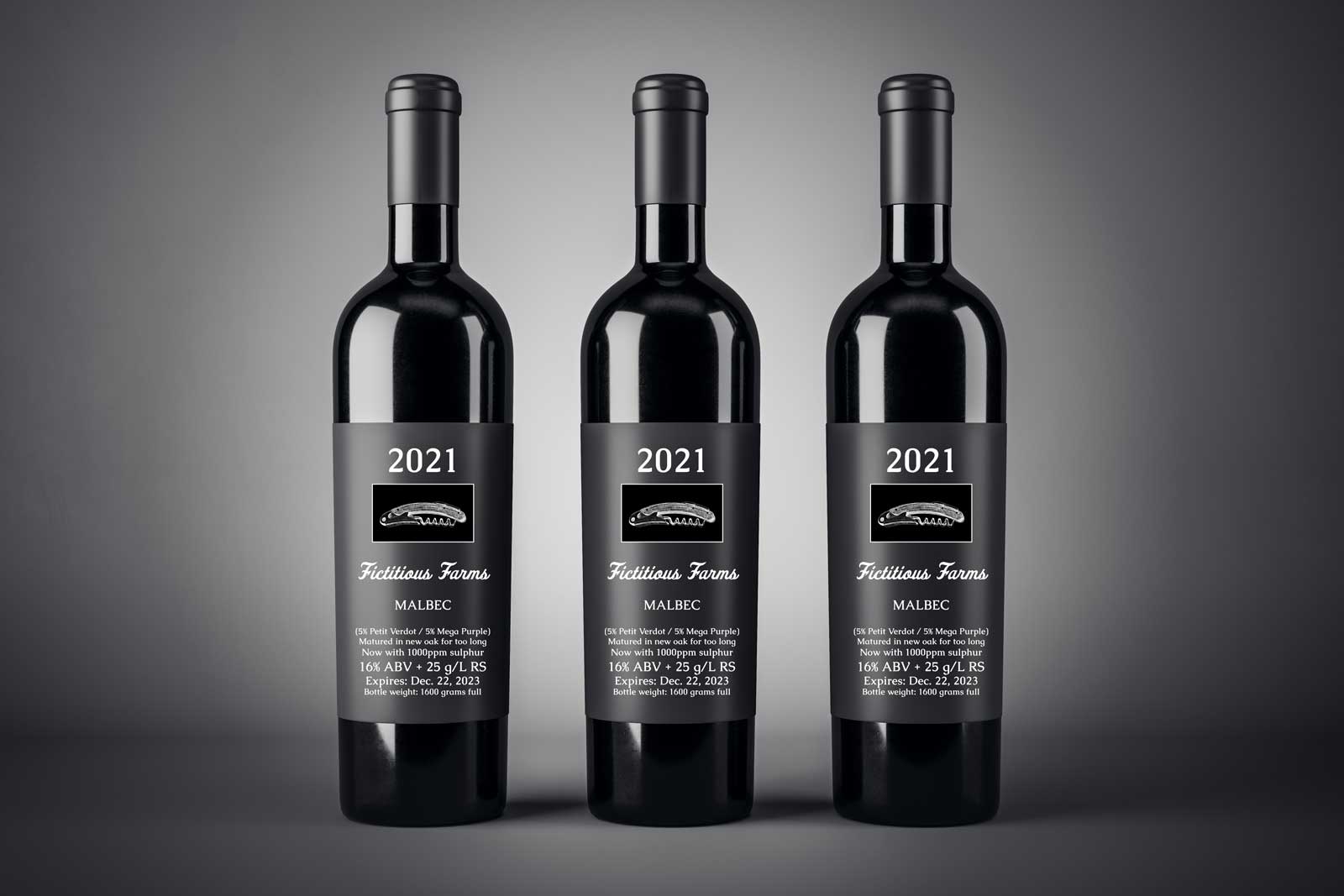
Practices in the Vineyard
“Great wine starts in the vineyard,” but apparently, this article chose not to start there. Still, some of the most important factors of quality have to do with what’s done in the field. I have a feeling that certain wine people will be apoplectic that the TTB limited this to only two items.
23. Picked By Hand or By Machine?
We don’t spend nearly enough time thinking about this, but good luck naming a fine wine that’s picked by machine. Once shattered, a berry starts to degrade, and machines just aren’t that good (yet) at preventing that from happening.
Bonus points if you can squeeze in a little detail on “labor hours per hectare” as a salute to heroic wines.
24. Chemicals and Other “Inputs” Used and Why
We’d like to know if this wine might have subtle notes of driving by the Suncor Energy refinery off I-270. We’d also like to know how barren the ground between vine rows looks so we can listen to your marketing about terroir and laugh.
Oh and if you think sulfur use is controversial, get a load of copper sulfate. Tell us about that, too.
Handle with Care
If I purchase this thing, how should I use it? (Yes, we are at the point in this article where I am referring to the wine as “this thing.” On behalf of the team here at Opening a Bottle, thank you for making it this far with us).
25. Suggested Serving Glass
There is nothing conceited about matching your wine to the right glass. It makes a world of difference. You spent good money on this bottle, you ought to enjoy it as best you can. It would be nice to know that this aromatic champagne performs better in a white wine glass than a flute. Or this Chianti Classico is actually quite Burgundian and belongs in a Pinot Noir glass. Or this naturalist pet-nat can be served in a pint glass because the producers clearly didn’t care if it tasted like beer.
26. Storage
“Place in wine rack above your refrigerator where it gets nice and toasty” said no wine ever.
27. Serving Temperature
“Serve ice cold to conceal this wine’s many, many flaws” would be helpful on many, but how about just “place in refrigerator for __ minutes before opening?”
28. Breathing Time
Does the wine need to breath a bit? Should I put it in a decanter to open it up (e.g. young Bordeaux)? Do I need to drink it right away once it is open? (e.g. warm-climate Sauvignon Blanc). Please: be honest with me!
29. Refrigerator Date
If I recork/recap this wine and put it in the refrigerator for another night, how long do I have before it gets flimsy? One day? Five days?
30. Worst Possible Pairing
We all know what would happen if wineries were required to provide a pairing suggestion on the label. So, have them admit to what the wine does not work with. Our edict also prevents cop-outs like “avoid asparagus.”
Wouldn’t it be great if it said something like “this wine will clash with all fish-based protein and really needs to be saved for the one time per year that you can stomach lamb?” Or “Wine pairing is a fallacy — a rock that certain wine writers apparently will die on — but if we must, please avoid copious amounts of garlic with our Nebbiolo.”
31. 1-800-WINE-FLAW
A new hotline with representatives on standby to discuss whether the tinge of horse butt in your Gamay is grounds for returning the wine to the merchant for a refund.
Business Practices
32. Négociant or Not?
We don’t need to know if the wine company is registered as an S-CORP or an LLC, but we would like to know if they bought any of the fruit or grew it themselves. File under: nice to know.
And kudos to Champagne for having a two-letter code on every label so consumers can understand the nature of the producer. We’re envisioning something like that … because every consumer has those two-letter codes memorized, right?
33. Who is the Parent Company?
Preferably presented as a tree or web, so as to confirm our hunch that all roads lead to Constellation Brands.
34. How Long Has the Winery Been in Business?
A simple “Establish in ____” would suffice.
35. The Winery’s Website and/or Relevant Social Media Account
“Come … join the digital age. The water is warm.”
36. Fair Labor Practices
Demanding this is like demanding the removal of influence from lobbyists in politics — it’ll likely never happen. But wouldn’t it be nice to know succinctly if the people who made the wine possible were fairly compensated and worked in a supportive environment? This is an important topic that goes well beyond the boundaries of this pithy piece, but it is astonishing how many wines tout their organic and biodynamic bona fides, yet fair labor practices are glossed over. I get that wine is a business with razor-thin margins, and in many parts of the industry there is a genuine desire to be ethical. So what this item would look like requires a deep dive, but it is certainly worth bringing up. I honestly don’t know what would be satisfactory on this label item (do you?), but we need something.
37. Weight of the Bottle
Sure, we could just weigh it ourselves, but for online wine sales, we don’t get the luxury of “hefting” it in our hands. Yes, there is a glass shortage and winemakers need to procure what they can, but that certainly doesn’t excuse the tasteless excess of many “luxury” wines out there with their lead-footed punts. Seeing this on the label would force the issue on this one, because it is a biggie.
38. Number of Bottles Produced
I’m not talking about some “No. 450 out of 500” thing to make collector’s swoon. I am asking for the number to multiply the bottle weight by so I can arrive at …
39. The Wine’s Carbon Footprint
… If a mass-production 1300-gram bottle could be just as well placed in a 1,150-gram bottle, that’s a big savings on emissions. So why not do it? (There will be more on this topic in the coming weeks).
But bottle weight is not alone on this one. There is also vineyard practices (e.g. tilling the soil releases carbon), winery practices (e.g. how clean is the energy powering the place?), and a whole litany of emissions to account for in the supply chain.
Can you imagine if this was on every label? We’d probably be so shocked and horrified, we’d never drink wine again.
40. Other Environmental Shenanigans
How much water does the winery use? How do vineyard practices effect local watersheds? What have they done to preserve biodiversity within the vineyard and its surroundings? Were any forests cleared to plant the vineyard? How much waste does the winery create? Is the winery powered by renewable energy of some kind?
What else can you tell me so that I don’t feel guilty about drinking this wine? Because in the end, that’s what this whole vain exercise is about: making us feel better about our decision to buy your wine.
OK, you can have the TTB back. We’re done.
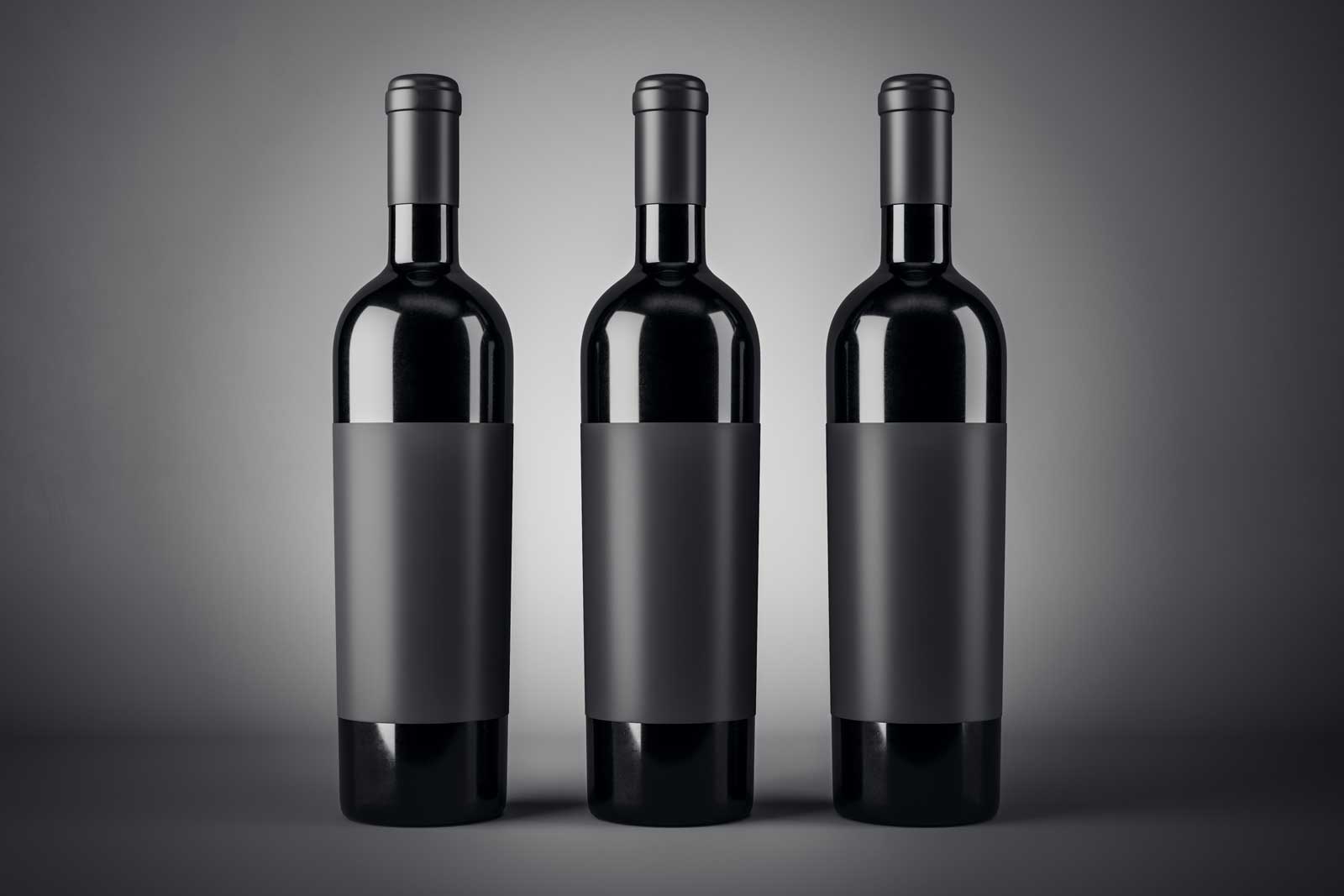
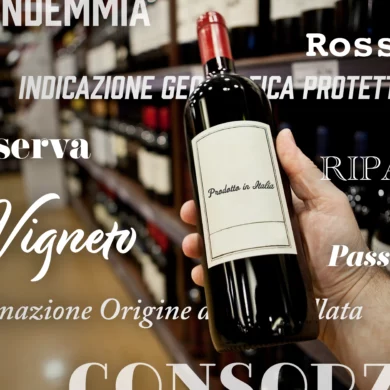
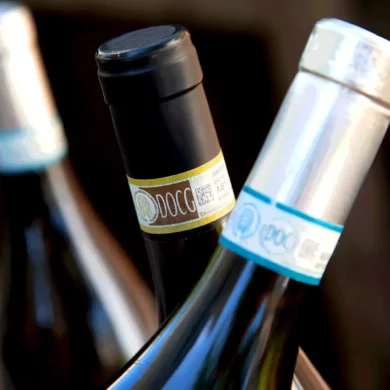
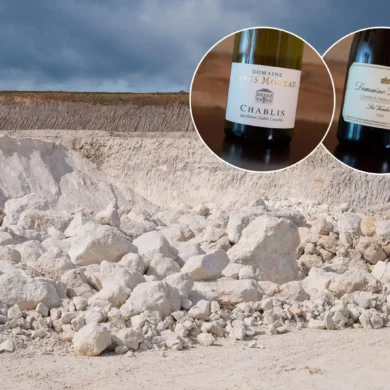
Just joined up. First article was 40 things that should be on a wine label. Reading the article confirmed that I made the right decision… Some tidbits made me snicker – ‘yup’! Blending percentages, Mega Purple usage, expiration dates, etc, etc, etc. Don
Hi Don,
Thank you for joining Opening a Bottle. Sorry for the late response to your comment (they were getting filed in a place that I was missing them). Glad you liked the 40 Things Article. I need to write another like that. Open to feedback on wines and topics you’d like covered.
Cheers,
Kevin